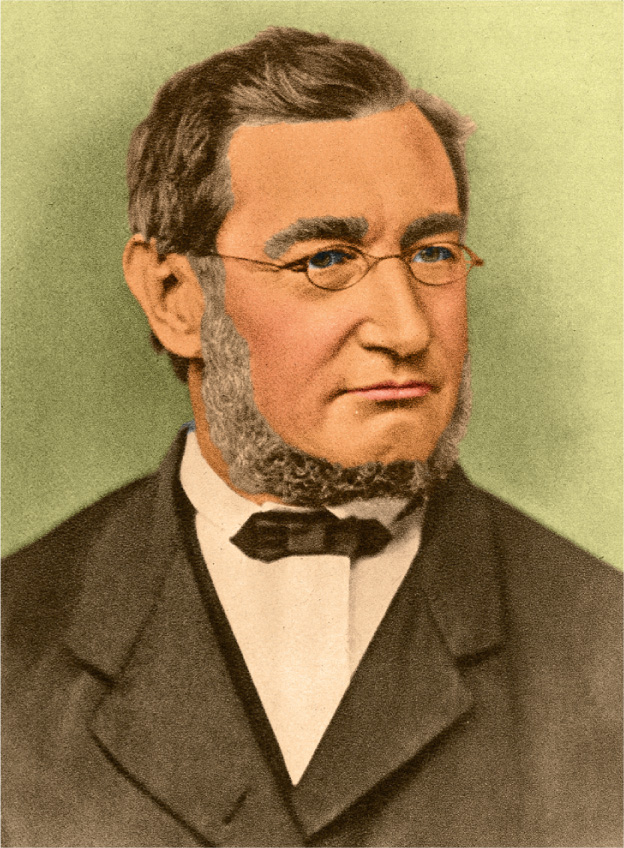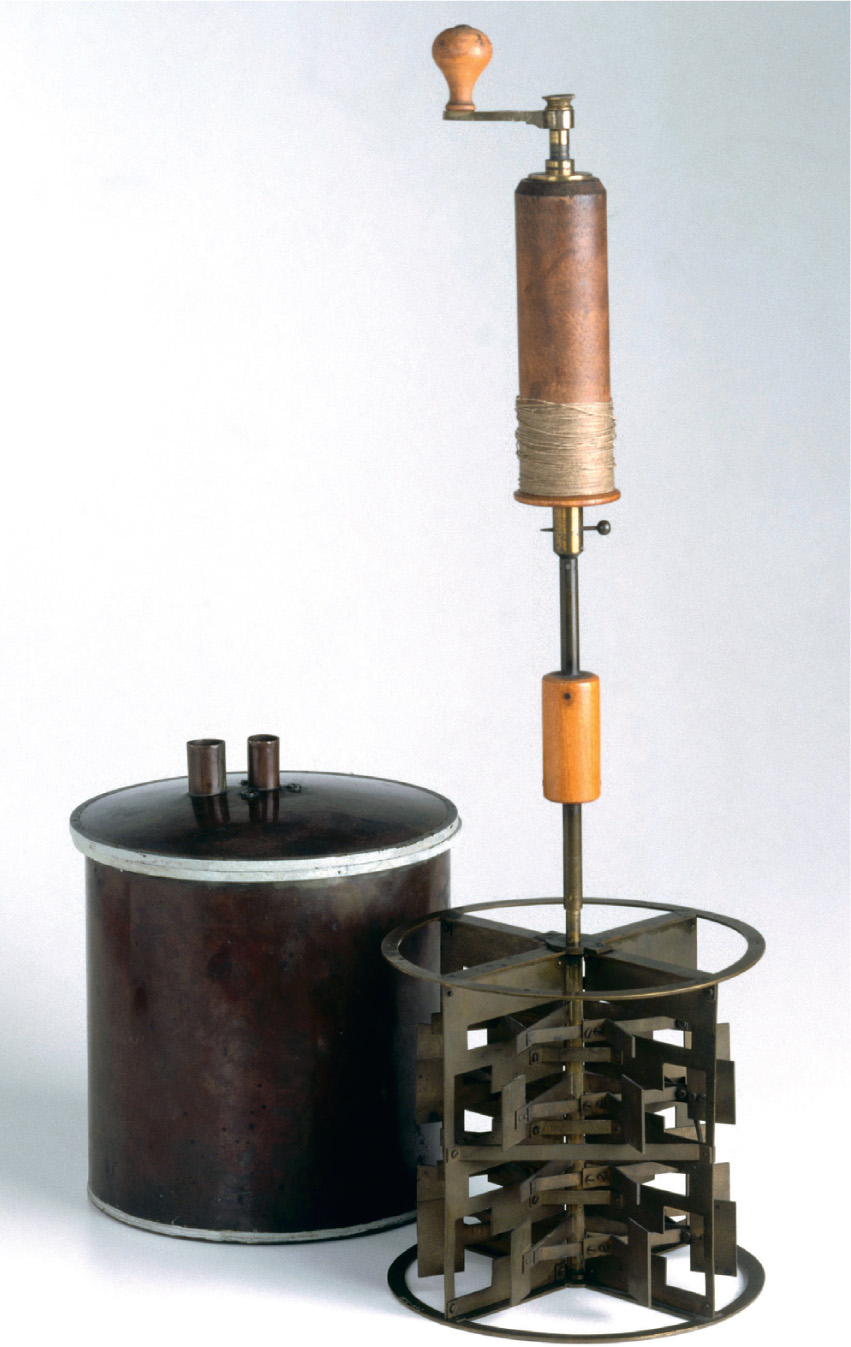
Julius Robert von Mayer (1814–1878).
One of the most important laws of physics is the law of conservation of energy, which tells us that energy can neither be created nor destroyed, but can be converted from one form into another (in other words, you can’t get something for nothing). An everyday example of this happens when a car brakes. The energy of motion of the car (kinetic energy) is converted into heat energy by friction in the brakes. This energy slowly dissipates out into the world as the brakes cool down, but is never lost. The first person to appreciate the significance of the conservation of energy was a German physician, Julius Robert von Mayer, who was the ship’s doctor on a Dutch vessel in the East Indies at the beginning of the 1840s.
Mayer’s ‘experiments’ involved cutting the veins of sailors to remove some of their blood. This was routine at the time as a treatment for various illnesses, but it was also a standard practice in the tropics because doctors believed that draining off a little blood would help people to cope with the heat. It was important to open a vein for this blood-letting, rather than an artery, because arterial blood is under higher pressure than veinous blood, and it is harder to control the bleeding from an artery. It is arterial blood, loaded with oxygen from the lungs, that is red; veinous blood, on its way back to the lungs, is a dark purple colour, although it quickly becomes red when exposed to oxygen in the air. When Mayer opened the vein of a sailor in Java, he was astonished to find that the blood was as bright red as arterial blood – indeed, at first he thought he had made a mistake and nicked an artery. But he then tested the rest of the crew, taking great care to cut only veins, and found the same thing.

This highlights the importance of an enquiring mind in science – we might say, a scientific mind. Dozens of doctors must have noticed the bright colour of veinous blood in the tropics before Mayer came along, but he was the first one to see it as a phenomenon worth studying and to carry out experiments to find out what was going on.
Mayer knew about Lavoisier’s work (see here), which had established that warm-blooded animals are kept warm by a form of slow combustion, with oxygen from the air combining with components of their food, just as a fire is kept hot by oxygen from the air combining with wood or coal. He correctly inferred that the veinous blood in the tropics was bright red because less oxygen had been used up, as the body does not need to ‘burn’ so much fuel to maintain its temperature when the outside world is warm. And he made the great leap of understanding to realize that this implied that all forms of energy are interchangeable – heat from the Sun, muscle energy, burning coal, or whatever. Heat, or energy, could never be created but only converted from one form into another.

When he got back to Europe, Mayer wrote up his ideas and tried to publish scientific papers in the hope of drawing attention to them. But unfortunately, because he had no training in physics the papers were difficult to understand and contained errors. At first, he had trouble getting anything published. Even though he then studied physics and published work on the effect of heat on expanding gases, very little notice of his work was taken at the time. It was left for the English physicist James Joule to independently discover the relationship between work and heat in a series of experiments, most famously involving a falling weight connected by a rope and pulley to a paddle-wheel in an insulated barrel of water. The weight falling under gravity converts gravitational energy into the rotational energy of the paddle wheel, which in turn increases the temperature of the water. Mayer’s compatriot Hermann von Helmholtz learned about these ideas though Joule’s work, and published the definitive statement of the law of conservation of energy in 1847. This was the moment when the idea gained widespread attention, and although Helmholtz had learned about this from reading Joule’s publications, eventually Mayer also received the credit that was due to him.
The law of conservation of energy is so important that it is now known as the First Law of Thermodynamics. It means that the total energy of an isolated system does not change, but it is important to remember that the planet we live on is not an isolated system in thermodynamic terms, because it receives energy from the Sun. Mayer, however, was one of the people who pointed out around this time that according to the best understanding of mid-nineteenth century physics, the Sun itself would run out of energy in a few thousand years. That puzzle would be resolved by the discovery of radioactivity (see here).